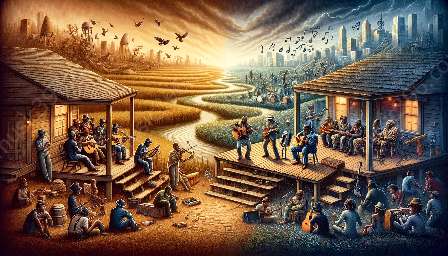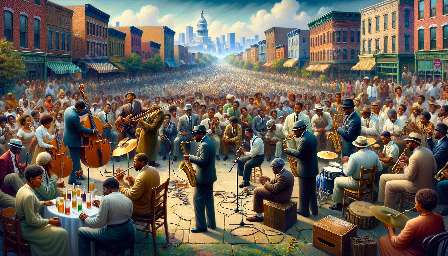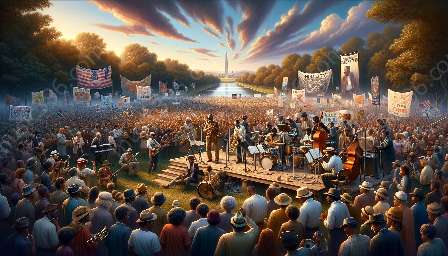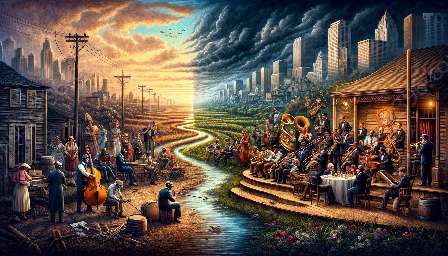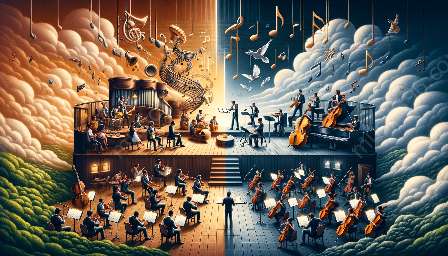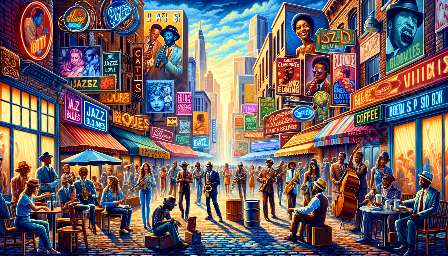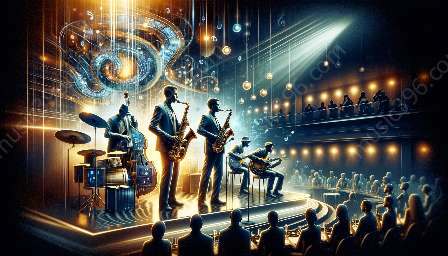Jazz and blues music have been deeply affected by the changing landscape of technology and media platforms, shaping the way these genres are created, performed, and consumed. This transformation has significant implications, especially when viewed through the lens of ethnomusicology.
The Roots of Jazz and Blues
Before we delve into the impact of technology and media, it's essential to understand the cultural and historical foundations of jazz and blues. Both genres trace their roots to the African American communities in the late 19th and early 20th centuries, reflecting the experiences and struggles of Black Americans.
Jazz emerged as a vibrant cultural expression in the post-slavery era, combining elements of West African music, European harmonies, and improvisational techniques. Meanwhile, blues music evolved from the spirituals, work songs, and field hollers of the rural South, conveying raw emotions and narratives of hardship and resilience.
Impact of Changing Technology
The advent of recording technology in the early 20th century marked a pivotal turning point for jazz and blues music. With the ability to capture performances and distribute music on a mass scale, artists gained newfound opportunities for exposure and commercial success. However, this technological advancement also brought about challenges, such as concerns about authenticity and representation in recordings.
Over the years, advancements in recording techniques and equipment have continued to shape the production and sound of jazz and blues albums. From the warmth of analog vinyl to the clarity of digital recordings, each technological innovation has left its mark on the sonic landscape of these genres.
Media Platforms and Global Reach
The rise of radio, television, and the internet has significantly expanded the reach of jazz and blues music, allowing for greater dissemination and accessibility. As a result, artists now have the means to connect with global audiences, transcending geographical boundaries and cultural barriers. Moreover, social media platforms and streaming services have revolutionized the way fans discover and engage with jazz and blues music.
From live streaming performances to interactive online communities, these digital platforms have reshaped the dynamics of fan-artist interactions, fostering new ways of experiencing and supporting jazz and blues music.
Ethnomusicology Perspectives
When we consider the impact of changing technology and media platforms on jazz and blues from an ethnomusicological perspective, we uncover profound insights into the intersection of culture, identity, and sonic expression.
Ethnomusicologists examine how technology and media influence the circulation and reinterpretation of traditional musical practices within contemporary contexts. They also analyze the power dynamics and representation issues embedded in the production, distribution, and consumption of jazz and blues music across diverse global communities.
Emerging Trends and Innovation
Despite the challenges and complexities, the evolving landscape of technology and media has also sparked new opportunities for innovation and cross-cultural dialogue within the jazz and blues genres. Experimental collaborations, fusion of musical styles, and digital experimentation have become defining features of contemporary jazz and blues expressions.
Furthermore, the use of digital platforms and virtual reality technologies has opened up novel possibilities for immersive and interactive musical experiences, redefining the boundaries of live performance and audience engagement.
Preserving Tradition in a Digital Age
As jazz and blues music continue to adapt to the ever-changing technological and media environment, efforts to preserve the rich heritage and authenticity of these genres become paramount. Ethnomusicologists play a crucial role in documenting and safeguarding traditional musical practices, ensuring that the cultural significance and historical roots of jazz and blues are not overshadowed by technological advancements.
By studying the impact of technology and media on jazz and blues music, ethnomusicologists contribute to a deeper understanding of the dynamic relationship between musical traditions and the forces of modernization.
Conclusion
The evolution of jazz and blues music within the context of changing technology and media platforms encapsulates a complex interplay of tradition, innovation, and cultural dynamics. From the early days of recording technology to the digital age, these genres have continuously adapted and redefined themselves, reflecting the multifaceted influences of technological advancements.
By embracing an ethnomusicological perspective, we gain valuable insights into the intricate connections between music, society, and technology, shedding light on the ways in which jazz and blues have both shaped and been shaped by the ever-changing media landscape.


